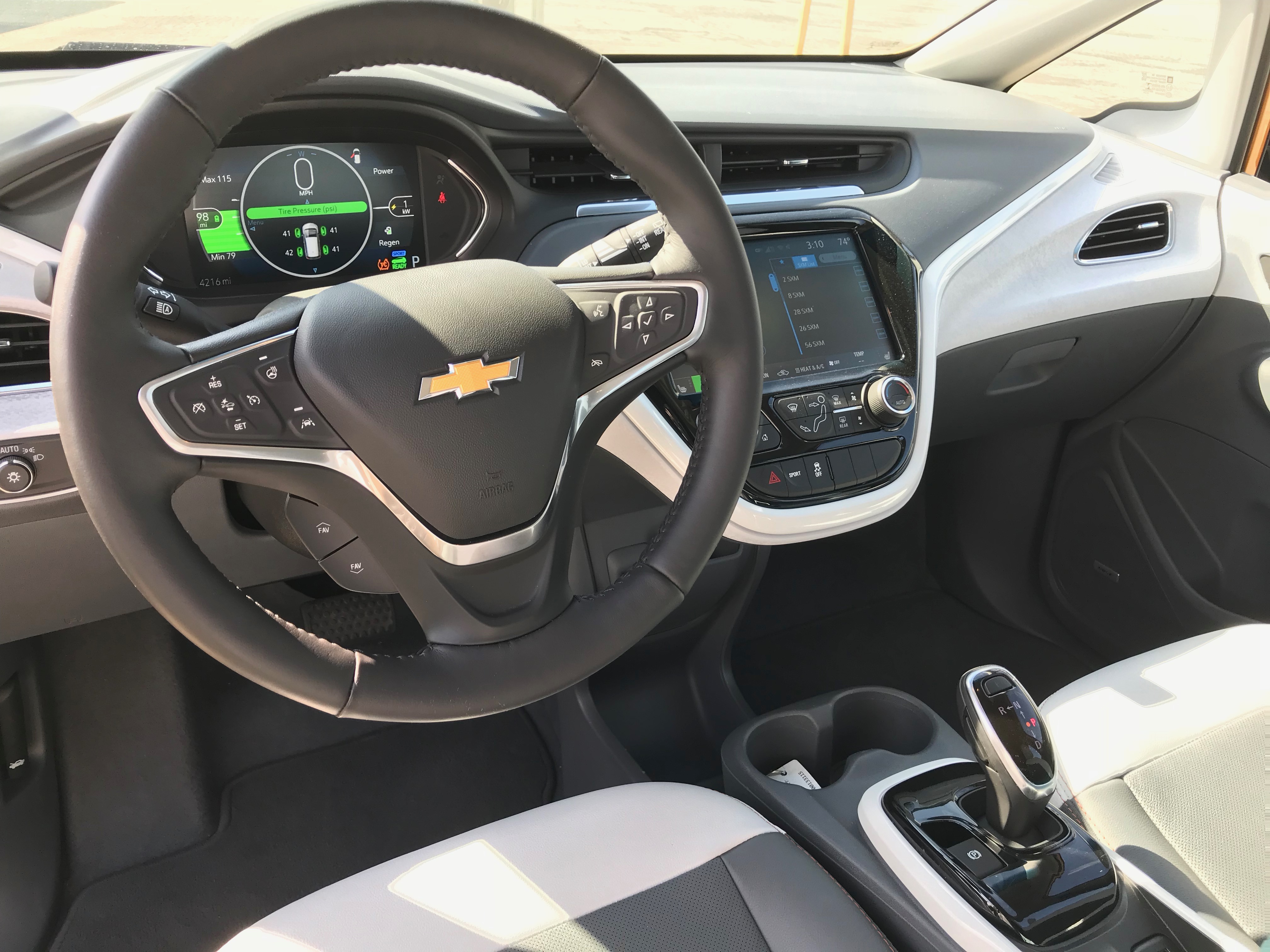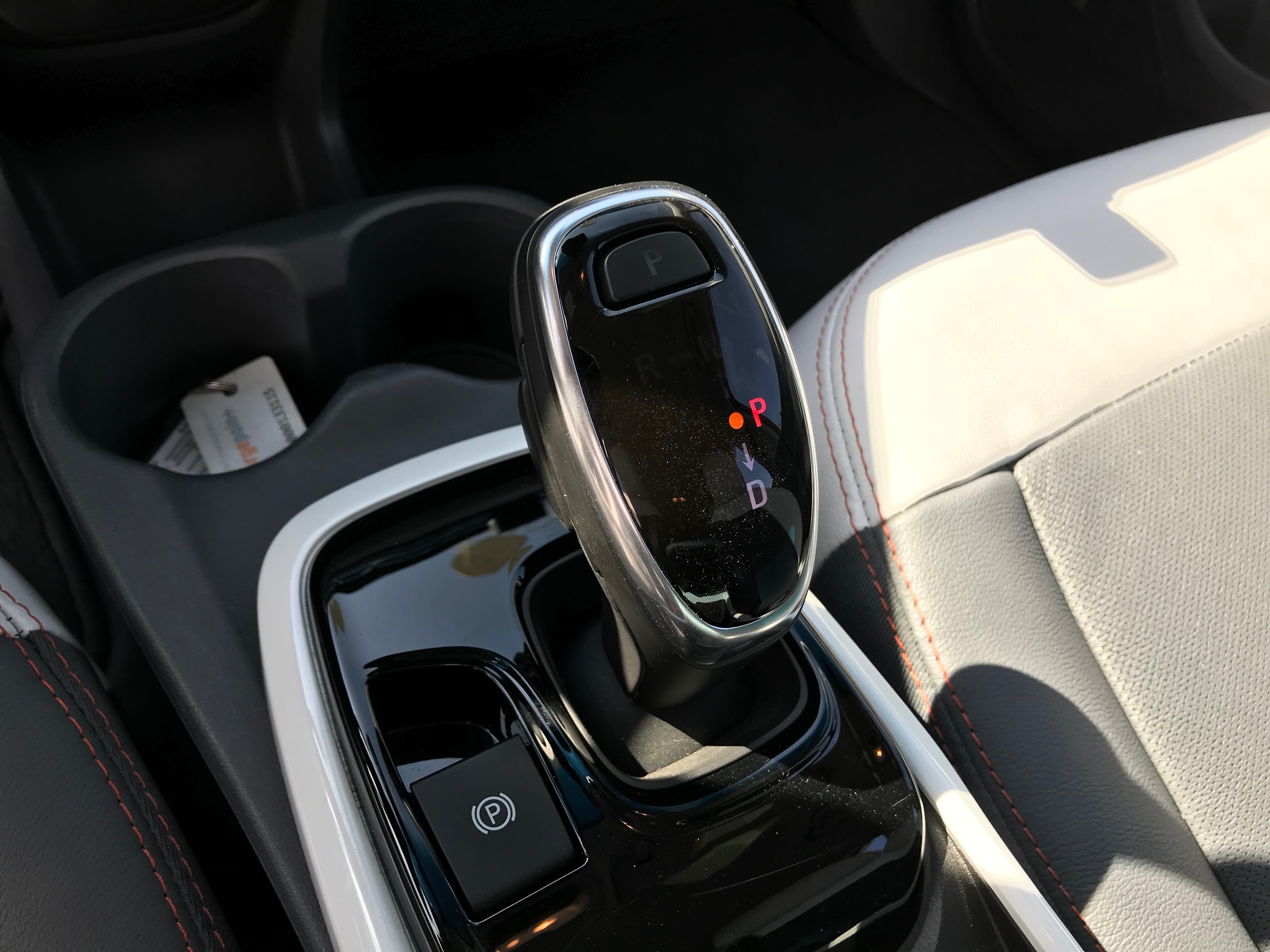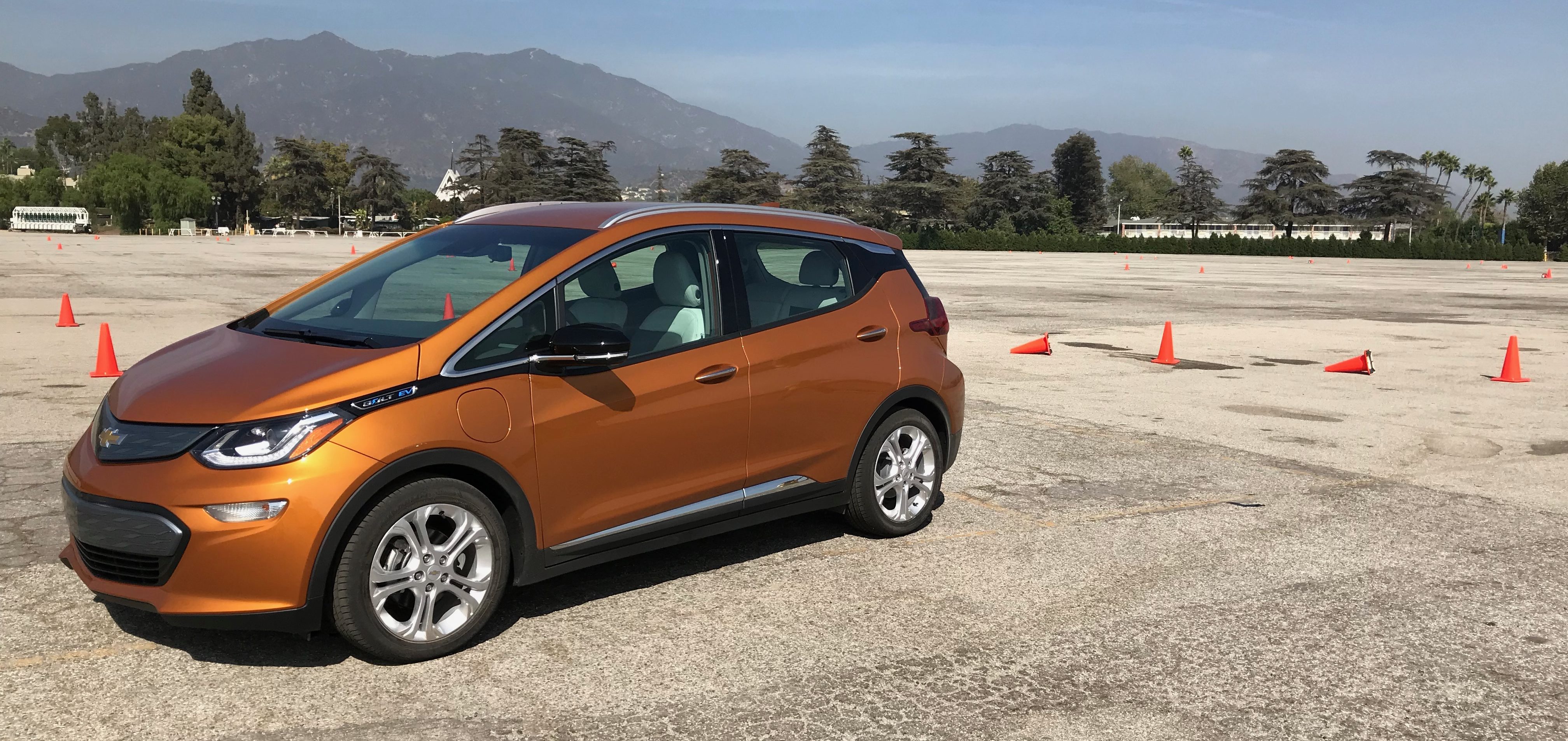
Autocross: 2018 Chevrolet Bolt EV
Chevy sets out to prove the Bolt can be a jolt of high-voltage fun…and puts a smile on our face.
By Randy Lioz, Editor, Car-ED.com | October 2018
Sales of the Chevy Bolt EV have been building steadily, as more Americans discover the benefits of EV ownership. While there are still challenges to overcome in terms of charging infrastructure, Chevy is eager to make the case that electric vehicles are not only just as much driving fun as internal combustion rides, they can be even more of a hoot!
The Event
Chevy invited journalists to drive an autocross course in the Bolt, to show that it can handle itself during aggressive driving. There were four Bolts there, two each with both all-season tires and much grippier summer rubber. The team also brought one of the industry benchmarks for front-wheel drive hatch fun, the Volkswagen GTI, so we could see how GM’s EV stacks up against a gas-powered rival.

For those who haven’t yet experienced the joy of autocrossing, it’s generally a parking lot—find one without many light poles if you can swing it—with a bunch of cones set up in the form of a road course. The course configurators will throw in some slaloms to weave through, some tighter turns and some high-speed sweepers, so you can get a feel for all of a car’s handling characteristics…and of course so you can try to one-up each other.
Remind me about the Bolt again…
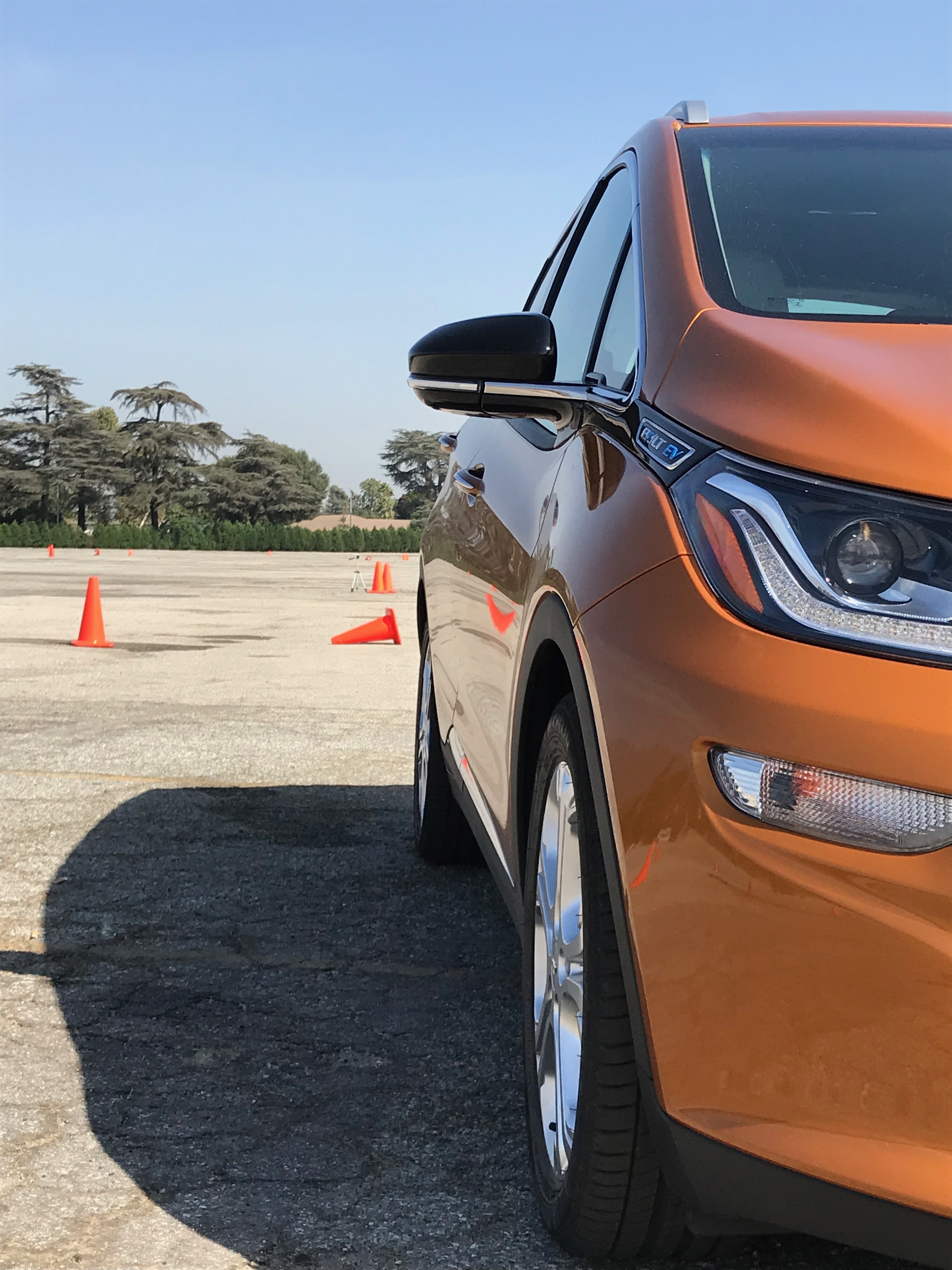 The Chevy Bolt is GM’s dedicated electric vehicle, built from the ground up to maximize range and EV driving goodness. The Bolt can go 238 miles before needing a charge, according to the EPA, which is well more than most people will ever need. And if charging up around 30 miles of range per hour isn’t quick enough for you, you can get DC fast-charging capability and pick up 90 miles in a half hour.
The Chevy Bolt is GM’s dedicated electric vehicle, built from the ground up to maximize range and EV driving goodness. The Bolt can go 238 miles before needing a charge, according to the EPA, which is well more than most people will ever need. And if charging up around 30 miles of range per hour isn’t quick enough for you, you can get DC fast-charging capability and pick up 90 miles in a half hour.
Chevy has been encouraged by recent trends in Bolt global sales, having hit a total of 30,000 units so far, and sales steadily growing since the beginning of the year. A big chunk of these sales are in South Korea, which has been particularly aggressive in supporting EV sales growth, and is actually home to production of many Bolt components. But Chevy has been watching consideration rise, and the brand’s senior communications manager for cars and crossovers, Kevin Kelly, thinks a big part of this is that range anxiety is “no longer a thing” given the Bolt’s high-capacity battery. In fact GM has announced production increases for the Michigan final assembly plant, anticipating that more and more people will see the benefits of of EV ownership throughout the world.
Okay, so how’d it go?
 Chevy’s invite to Santa Anita Park was aimed at illustrating why GM is willing to make that bet. Electric cars are certainly more efficient, and you can read about exactly why here. But they can also be tons of fun, and an autocross course is well suited to displaying the other advantages that EVs have over internal combustion engines. While a gas engine needs to be spinning at a certain rate to generate the oomph that gets your going, electric motors have all their get-up-and-go ready even before they start moving. This instant-on nature is perfect for a driving situation, like a cone course, where you’ll have to brake hard to set up for a corner, and then mash the throttle once you’ve finished the arc in order to rebuild your momentum.
Chevy’s invite to Santa Anita Park was aimed at illustrating why GM is willing to make that bet. Electric cars are certainly more efficient, and you can read about exactly why here. But they can also be tons of fun, and an autocross course is well suited to displaying the other advantages that EVs have over internal combustion engines. While a gas engine needs to be spinning at a certain rate to generate the oomph that gets your going, electric motors have all their get-up-and-go ready even before they start moving. This instant-on nature is perfect for a driving situation, like a cone course, where you’ll have to brake hard to set up for a corner, and then mash the throttle once you’ve finished the arc in order to rebuild your momentum.
 The Bolt had some other tricks up its sleeve that helped to add to the fun, including a Sport mode that goosed the throttle calibration even further and the ability to turn off the traction control, so the car doesn’t reign in the fun and hit the brakes in order to combat wheel spin. The car also has a Low setting for the transmission, which enables a high level of regenerative braking, essentially giving you what EV owners call “one-pedal driving.” For much of the around town duty, you won’t touch the brake pedal at all, and you can even bring the car to a complete stop with it if you use the Regen on Demand paddle mounted to the back of the steering wheel.
The Bolt had some other tricks up its sleeve that helped to add to the fun, including a Sport mode that goosed the throttle calibration even further and the ability to turn off the traction control, so the car doesn’t reign in the fun and hit the brakes in order to combat wheel spin. The car also has a Low setting for the transmission, which enables a high level of regenerative braking, essentially giving you what EV owners call “one-pedal driving.” For much of the around town duty, you won’t touch the brake pedal at all, and you can even bring the car to a complete stop with it if you use the Regen on Demand paddle mounted to the back of the steering wheel.
For the purposes of the autocross, this is a great feature to have, since it allows you more control over the vehicle speed without switching pedals, which can take time and lead to clumsy pedal inputs. In reality the regen brake force isn’t really enough to slow you down at the rate you need for the most extreme corners on an autocross course, but its helpful in situations where subtle speed calibrations are needed, and it’s actually a good deal of fun when driving around town.
 Along with the GTI, we got a chance to try Bolts set up with both standard Michelin Energy all-season tires and Primacy summer tires, the latter which upped the grip factor greatly, and are available as an option from GM for drivers who live in balmier climes. Both sets were low rolling resistance tires, which holds major advantages for efficiency and range, and Mike Burns, the engineer in charge of the Bolt’s handling dynamics, told us it had the lowest resistance of any tire on a GM vehicle, ever. It also has self-sealing capability, so the company could lower the car’s weight be ditching the spare wheel and tire.
Along with the GTI, we got a chance to try Bolts set up with both standard Michelin Energy all-season tires and Primacy summer tires, the latter which upped the grip factor greatly, and are available as an option from GM for drivers who live in balmier climes. Both sets were low rolling resistance tires, which holds major advantages for efficiency and range, and Mike Burns, the engineer in charge of the Bolt’s handling dynamics, told us it had the lowest resistance of any tire on a GM vehicle, ever. It also has self-sealing capability, so the company could lower the car’s weight be ditching the spare wheel and tire.
 Burns also talked about the car’s chassis; like other purpose-built EVs it has the advantage of building the battery pack right into the structure of the car, setting it down low for better weight distribution, and stiffening the car around it.
Burns also talked about the car’s chassis; like other purpose-built EVs it has the advantage of building the battery pack right into the structure of the car, setting it down low for better weight distribution, and stiffening the car around it.
These advantages revealed themselves in the course, where the Bolt had relatively crisp turn-in despite the low traction surface of the parking lot on which the cones were laid. This really was a parking lot, so there was loose gravel and dirt all over the place, and in the higher-speed sections the Bolt struggled to maintain its grip on the situation, but when the tires did grab it was an orderly transition that allowed the car to use its electric torque to power into the next straight.
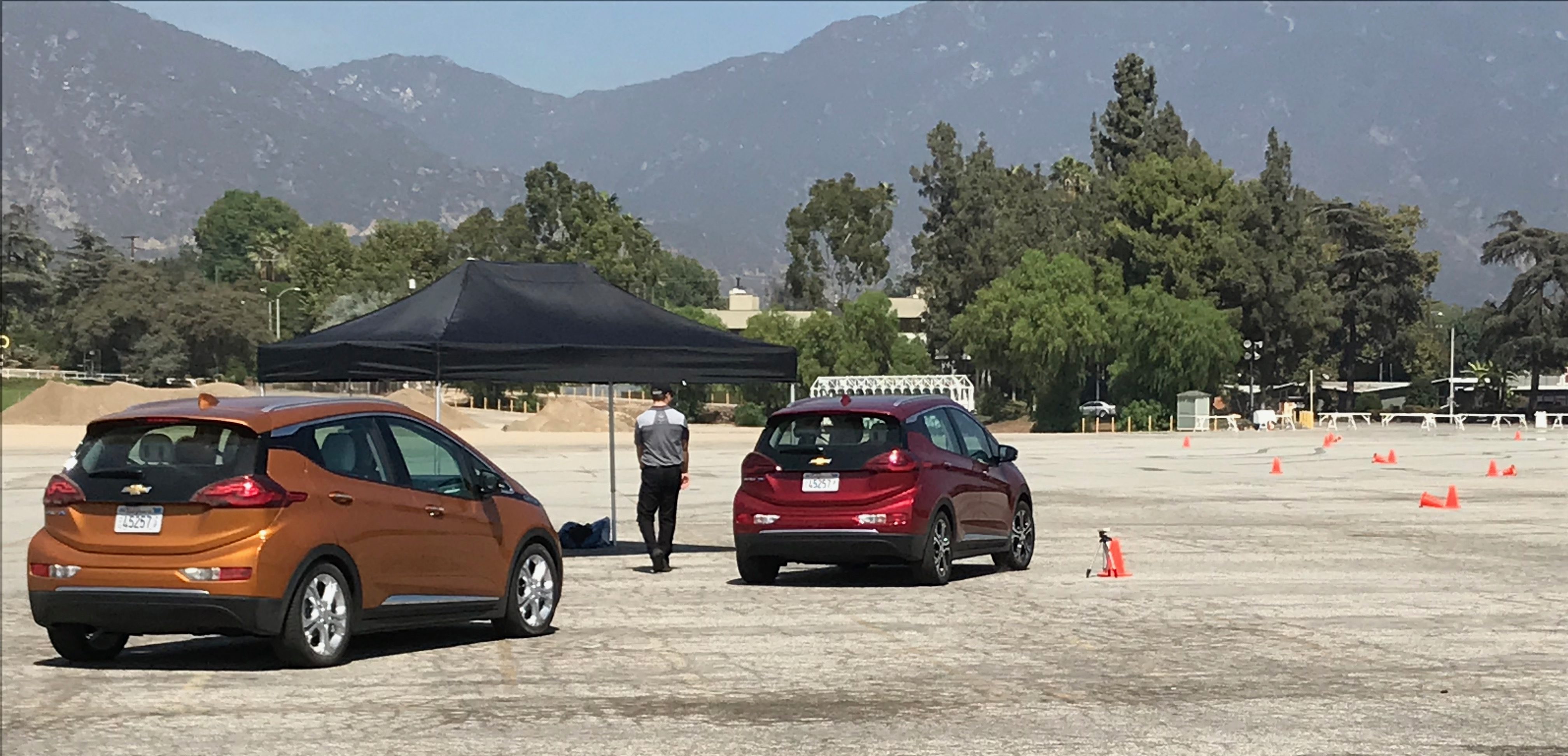
Body roll was definitely higher than in the GTI, which is a lower—by 5″—and wider vehicle, and also has a more sophisticated rear independent suspension. The GTI had all-seasons on, but it has also been honing its handling chops for seven generations, and its snappy DSG transmission holds revs up in sport mode, so its turbo engine was able to keep up the boost and be ready for corner exits.
 The Bolt’s power specs are well-matched with those of the GTI, with 200 horses to the VW’s 220, but its 266 lb-ft of torque besting the GTI’s 258. And both of those GTI numbers require you to use pricier premium fuel.
The Bolt’s power specs are well-matched with those of the GTI, with 200 horses to the VW’s 220, but its 266 lb-ft of torque besting the GTI’s 258. And both of those GTI numbers require you to use pricier premium fuel.
In the end, the Bolt with its summer tires was able to go around the course slightly quicker than the GTI, while the all-season-shod Bolt was a bit slower than the German. That’s a monumental achievement for a car not really set up for handling duty the way the GTI is. The Bolt’s ability to apply power quickly in the corners went a long way toward overcoming the GTI’s handling advantage.
By the end of the event, the drivers had put the Bolt through a torture test, and the front tires were completely shredded. But it was all in the name of science, so we could tell you how much fun the car can be in a fast corner.
So is this my new track car?
 We wouldn’t go that far. The Bolt can be fun, but it’s really not set up for sustained sports car driving. But the event did show that living with an EV like the Bolt doesn’t mean sacrificing driving fun, even as you get the benefits of efficiency and a lower carbon footprint.
We wouldn’t go that far. The Bolt can be fun, but it’s really not set up for sustained sports car driving. But the event did show that living with an EV like the Bolt doesn’t mean sacrificing driving fun, even as you get the benefits of efficiency and a lower carbon footprint.
